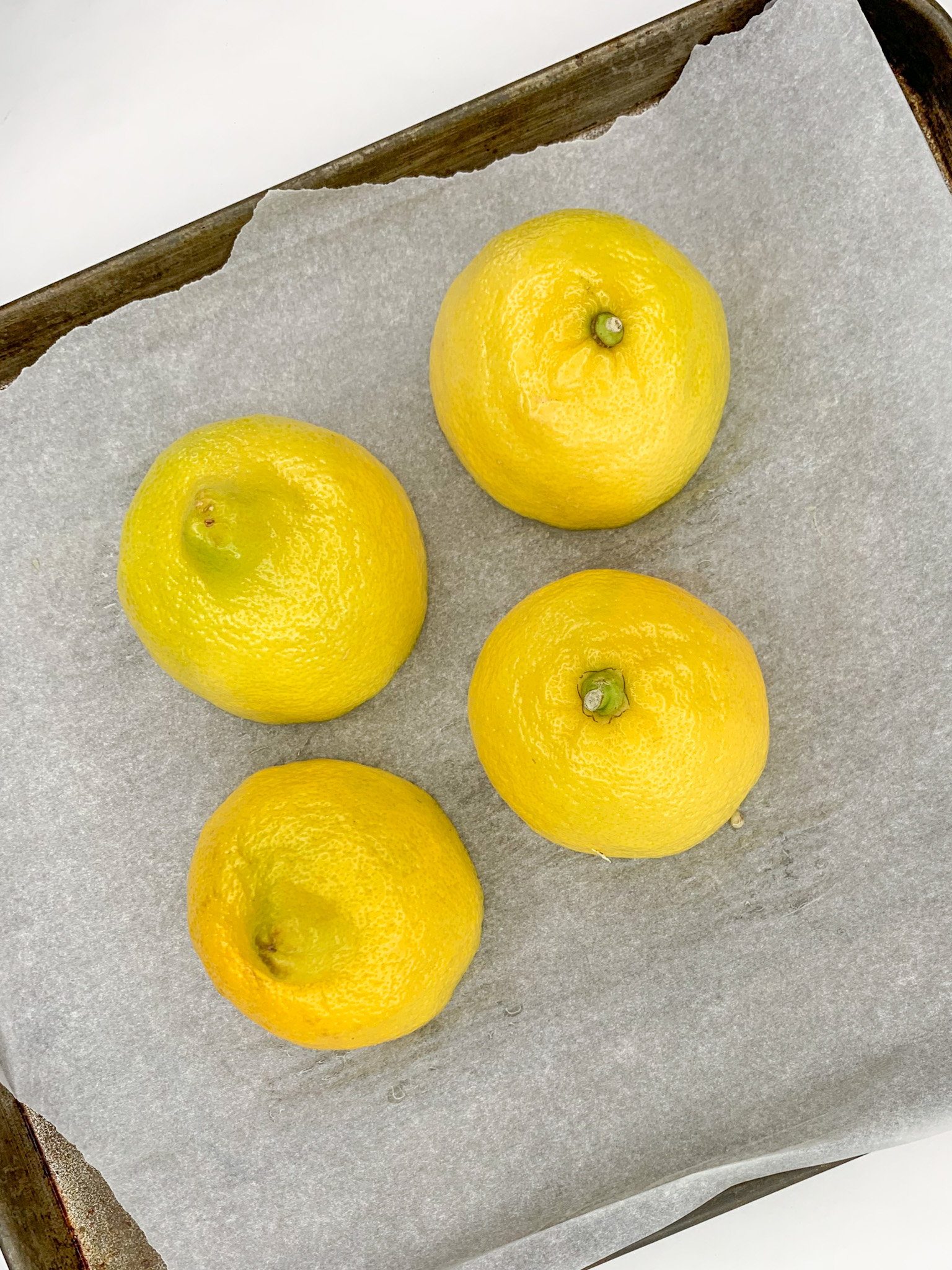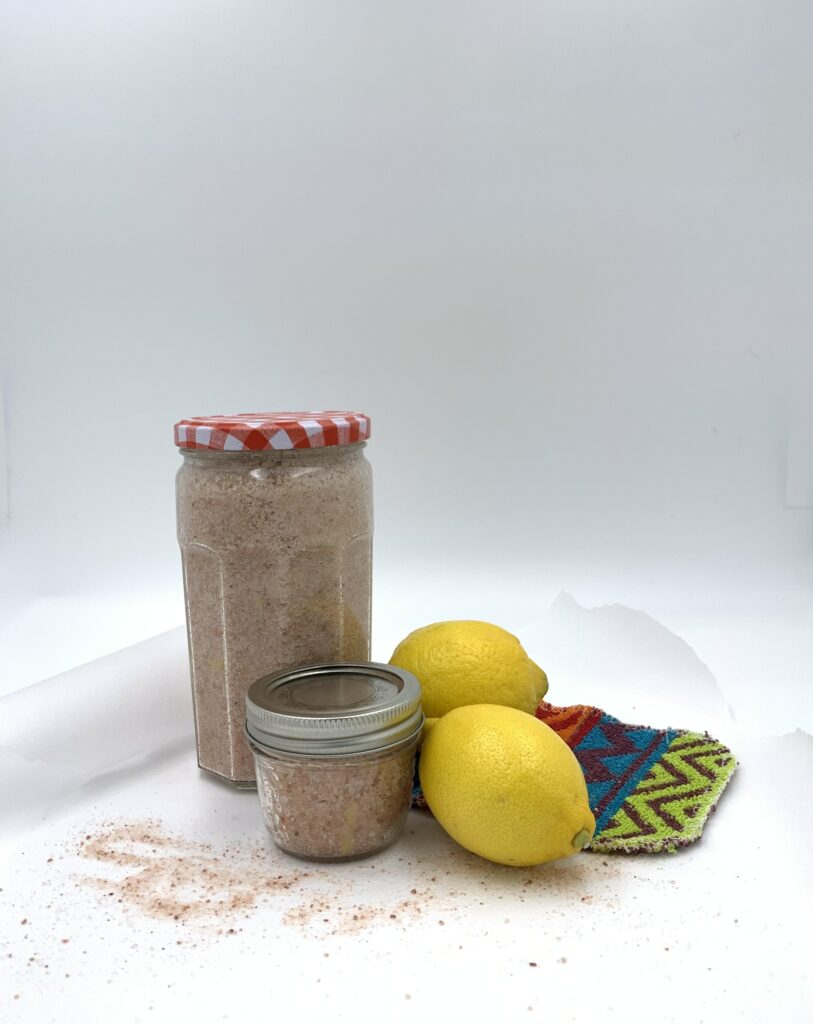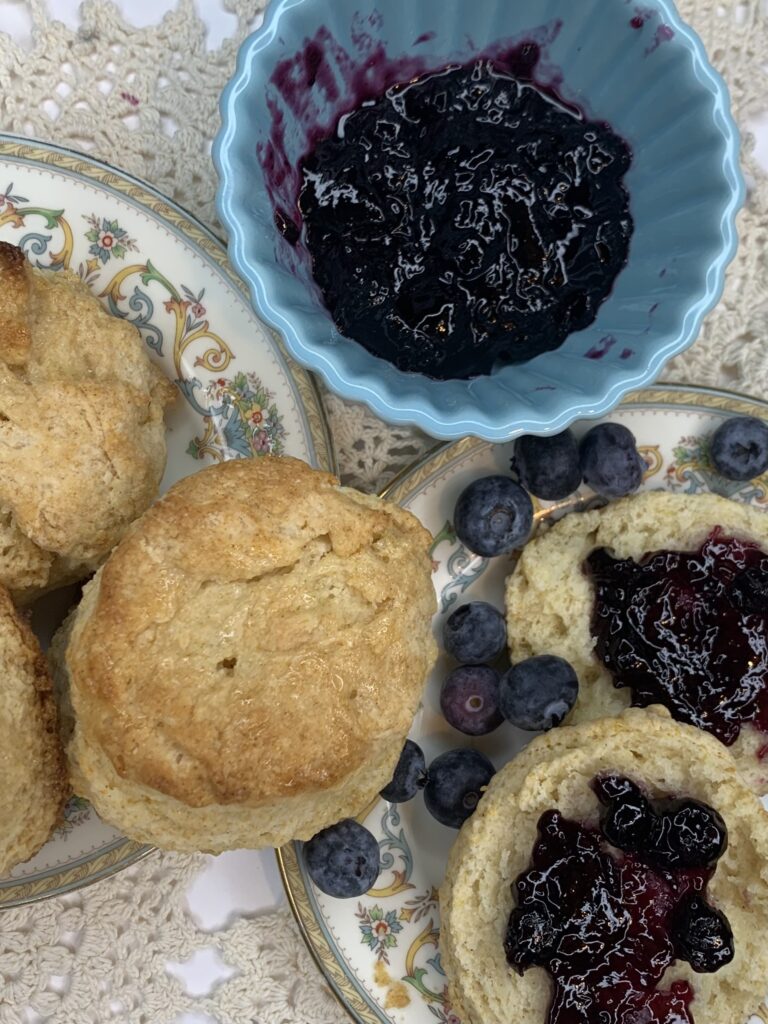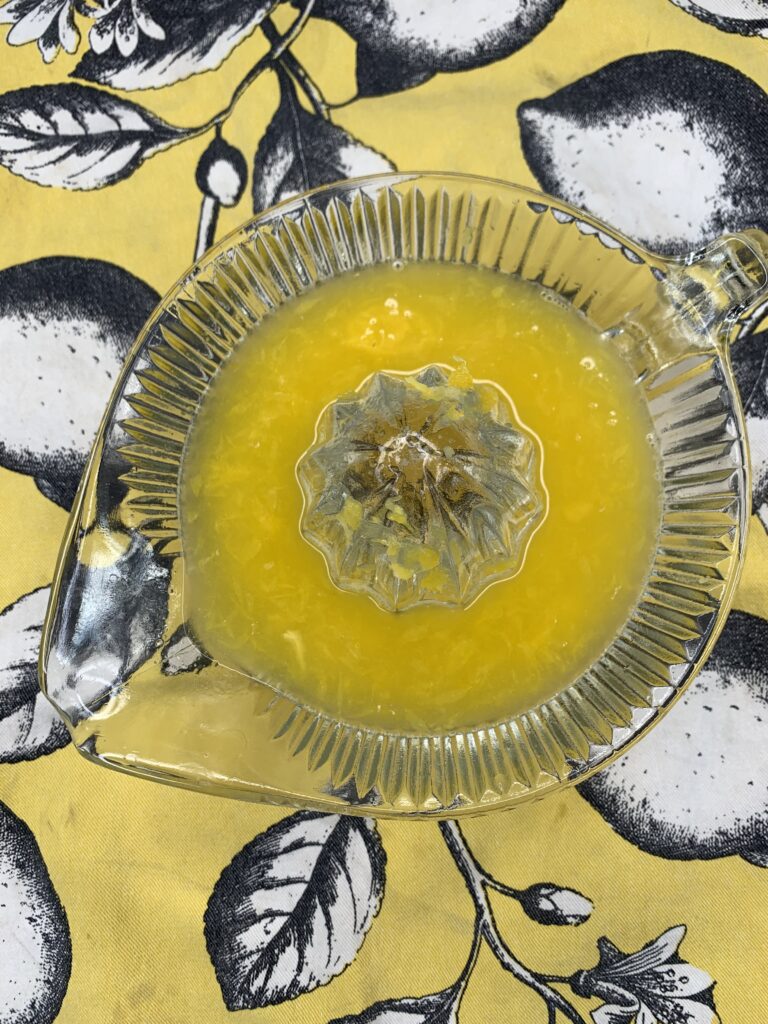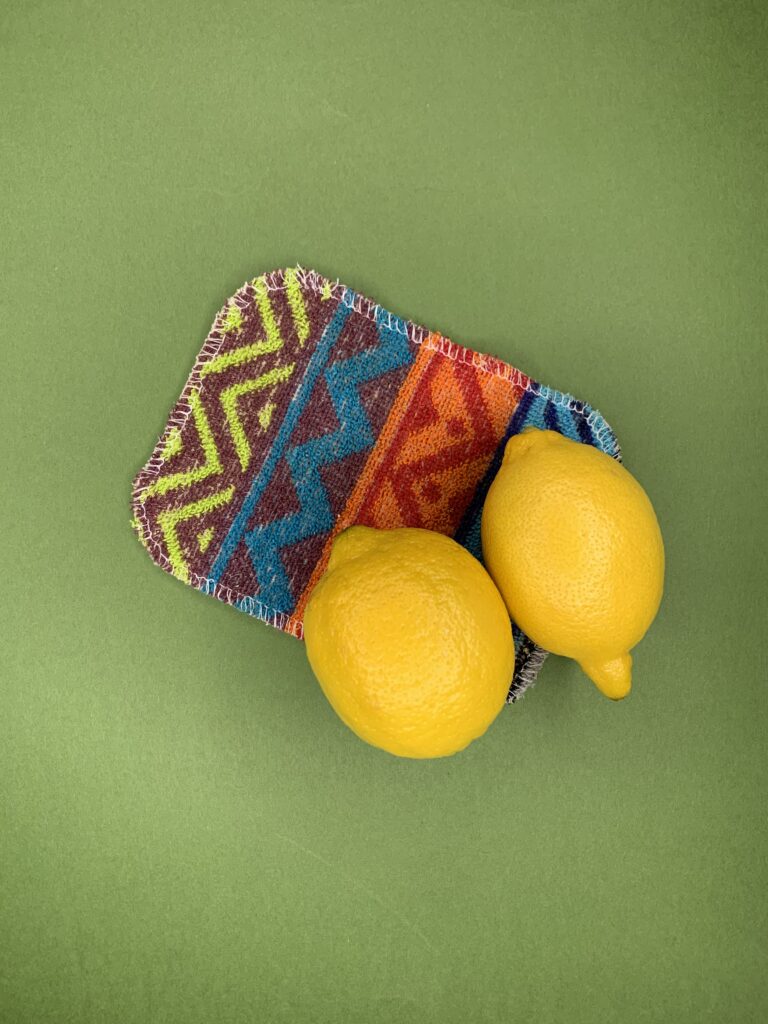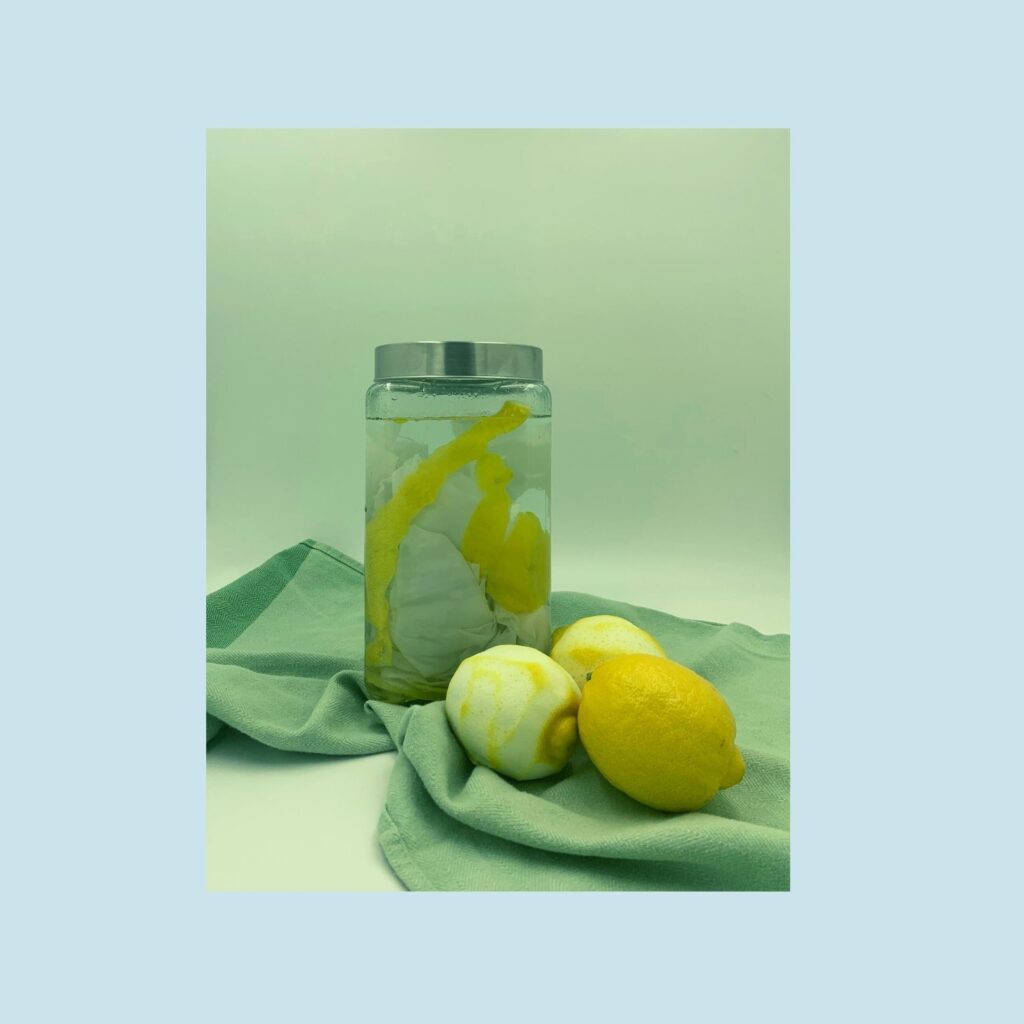Then are few sights more cheering in the dead of winter than a stack of fresh lemons. The sunshiny yellow, the glossy skin, the pleasing ovoid shape—they’re irresistible! Maybe that’s why—without even thinking—I recently grabbed a ten-pound sack of them in Costco.
By the time I was leaving the store, buyer’s remorse had set in. What was I going to do with all those lemons? Had I fallen prey, once again, to the pitfall of overbuying?
Happily, the answer was no. Well, sort of no.
Over the next few days, I was reminded that not only are fresh lemons delightful to look at, they brighten and freshen almost any dish imaginable, are a helpful household cleaning agent, and even after being squeezed, can perform serious DIY beauty duties.

Here are some of my top tips for using lemons:
First of all, you need to know that the juice from roasted lemons is super flavourful. To roast, simple cut lemons in half, pit them, and place in a pan (I put them on parchment to reduce mess). Cook at 425°F for 20 to 25 minutes. Let them cool and then squeeze the juice out.
Ways to use roasted lemon juice in cooking and baking:
As a simple but terrific finish for seafood.
Added to melted butter/garlic butter and poured over roasted vegetable sprinkled with salt and pepper. Add large-flake parmesan or chickpeas to make it vegetarian meal.
Added to liquid honey and stir the mix into tea.
Made into a syrup by combining 1½ cups of honey, ¼ cup water and ¼ cup lemon juice. Bubble gently and reduce by at least half. Try adding different flavourings—I like cinnamon, cardamon, clove, and ginger. Great for tea, or for drizzling on scones and tea loaves. For a great scone recipe, click here.
I also tried using fresh lemon juice in a cashew sour cream recipe from Oh She Glows. I’ve got to admit that I was not crazy about the flavour of this on its own, but found it a fabulous addition to scone, muffin, and loaf recipes, especially when I subbed out some of the all-purpose flour for almond flour. It’s also superb flavoured with hot sauce, and used to coat cauliflower florets before roasting them at 425°F for 20 to 25 minutes.
Whether roasting or zesting, I always scrub lemons before using.
Don’t feel like cooking or baking right now? Freeze lemon juice and zest in small containers to use when needed.

Ways to use lemons for household cleaning:
To safely clean most surfaces, use a solution made from equal parts vinegar and distilled water and the peels from two lemons mixed in a super-clean container. You can put clean cloths in the solution and take them out to use as cleaning rags when needed. Don’t put used rags back in the solution. The same recipe works in a refillable floor mop.
To make a dusting spray, add tablespoon or so of olive oil.
Don’t use lemon on marble or brass.
Lemon juice and vinegar in a spray bottle is an effective degreaser. Great for the kitchen, and for soap scum in the bathroom.
Ways to use lemons for self-care:
Need an effective, affordable scrub for body or feet? Combine two cups of sea salt with zest from one lemon and about ¼ cup of almond oil. Add several drops of essential oil if you like—I think grapefruit is a great compliment here—or cheat and add a bit of your favourite scented body oil. Make a big jar for yourself, but consider putting some in smaller jars, tying them with pretty ribbons and using as gifts. If you use this in shower, be sure to clean the slickness from the oil off afterwards. Or use it on your feet, legs, etc. while sitting on a towel, and wipe off with a warm washcloth.
For an exfoliating, softening facemask, mix a tablespoon of natural honey with the juice from half a lemon. Spread over your face (avoid the eyes). Leave on abut 15 minutes (less if your skin is very sensitive). Rinse off with warm water. Apply your favourite moisturizer.
My mother always said putting used lemons on her elbows and heels for ten minutes or so kept them smoother and softer. As with so many things, Mom was right. Turns out the acidic properties of lemon juices gets rid of dry and dead skin cells.

